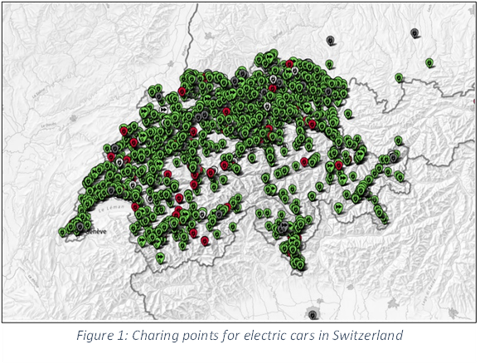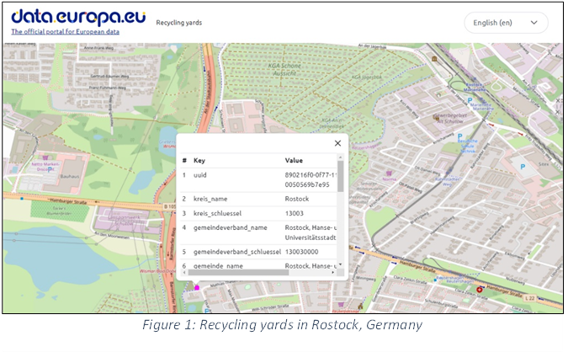Open data to achieve the EU green transition
Discover environment-related open data and how it supports the EU green transition
(Open) data and the green transition
Since the start of 2020, Europe has faced several economic, social, and political difficulties, such as the COVID-19 crisis and Russia’s invasion of Ukraine. These two events have short- and long-term impacts on, for example, the availability and prices of energy sources, food security, economic stability, the capacity of health care systems and defence throughout Europe. On a political level, these events motivated the European Union (EU) to accelerate the transition to a green and digital Europe, two of the European Commission’s (EC) six highlighted priorities for 2019 to 2024. This transition is outlined in the European Commission’s 2022 Strategic Foresight Report and the European Green Deal.
To achieve the EU Green Deal and a to achieve a fair green and digital transition across Europe, access to data (open as well as private) is crucial. These data can provide users with information, e.g. through interactive maps or dashboards. It can also be used to create services that open the way to and speed up the process towards, for example, climate neutrality, reduction of greenhouse gas (GHG) emissions, improvement of energy efficiency and restoring biodiversity.
European open data for the green transition
Data.europa.eu gives access to many datasets that can contribute to the green transition. At the time of writing, no less than 268 797 datasets are categorised as ‘Environment’. These data come mainly from EU Member States’ public administrations and EU institutions, such as the European Environment Agency and the Joint Research Centre. Examples are:
- Charging points for electric cars, published by the Swiss Federal Office of Energy (SFOE) on the Swiss open data portal (opendata.swiss). This dataset shows the location of charging points for electric vehicles across Switzerland, and the ones available, in real time. This enables users to take the road with a quiet mind as they know they will at any moment be able to find the closest operational charging point.

- Recycling yards, published by OpenData.HRO on the German open data portal (GovData.de). This dataset shows the address, name, operator, availability, opening hours and contact details of the recycling yards for domestic waste in the City of Rostock. This enables users to find their way to the closest yard where they can safely throw away or recycle their domestic waste, thereby reducing chances that toxic or hazardous waste ends up in a place where it can keep being dangerous. The dataset can then be used to create a visual and interactive map.

Other datasets in addition to ‘Environment’ can contribute to the green transition. For example, geospatial data (e.g. addresses, satellite imagery), transport data (e.g. traffic flow, public transport locations and timetable), energy data (e.g. energy sources and consumption levels), as well as data on agriculture, fisheries, forestry and food (e.g. farm irrigation, conservation areas).
Using open data for the green transition
Across Europe, public institutions and private companies are using (open) data to develop services. Some examples are:
- Slovenia’s Environmental Atlas (Atlas Okolja), created by the Slovenian Environment Agency. The Environmental Atlas is a map-interface of Slovenia that presents data of various indicators that measure the:
- Environment, such as water quality, or flooding risk areas;
- Climate, such as temperatures, sunshine, and wind levels;
- Land and oil usage, and
- Seismological risks.
- The Flooding Risk Map (Wateroverlastlandschapskaart – WOLK) from the Municipality of Assen in the Netherlands. The map provides an overview of drainage systems and areas at risk of flooding in cases of heavy precipitation in the Assen region. Floodings can damages buildings, infrastructures, roads, etc. By highlighting the risk zones, the map makes it possible to design public spaces in such a way that flooding risks are limited. The service uses open data from the Municipality of Assen.
- Sun Energia, a Finnish clean-tech start-up that aims to support the growth of the solar power market. The start-up tests the merits of users switching to solar energy by assessing the solar energy production for a specific building and estimating the potential savings. A free application is offered to users to test their solar power potential and shows technical specifications, financial calculations and savings of the users’ selections. This service uses open meteorological data as one of their inputs for the analysis of energy production and potential savings.
Going forward: how can Europe make best use of open data for the green transition?
The EU has set several ambitious targets to achieve the EU Green Deal and achieve the green transition. By translating the goals outlined in the EU Green Deal into climate law, these goals become binding for the EU and its Member States. To comply with the rules, EU countries must focus on reducing greenhouse gas emissions, decarbonising the economy, increasing energy efficiency and restoring biodiversity. As shown above, the publication and (re-)use of open data can help them achieve this.
More changes and developments are expected leading up to 2030, and new rules and updates of EU legislation are needed to make the green transition a reality. This is why the EU is already working on its package “Fit for 55: delivering the EU’s 2030 climate Target on the way to climate neutrality”.
For updates how open data are used to achieve the green transition, follow us on Twitter, Facebook and LinkedIn, or subscribe to our newsletter.
Interested in more examples and use cases or inspired to develop your own green application based on open data? Explore data.europa.eu
